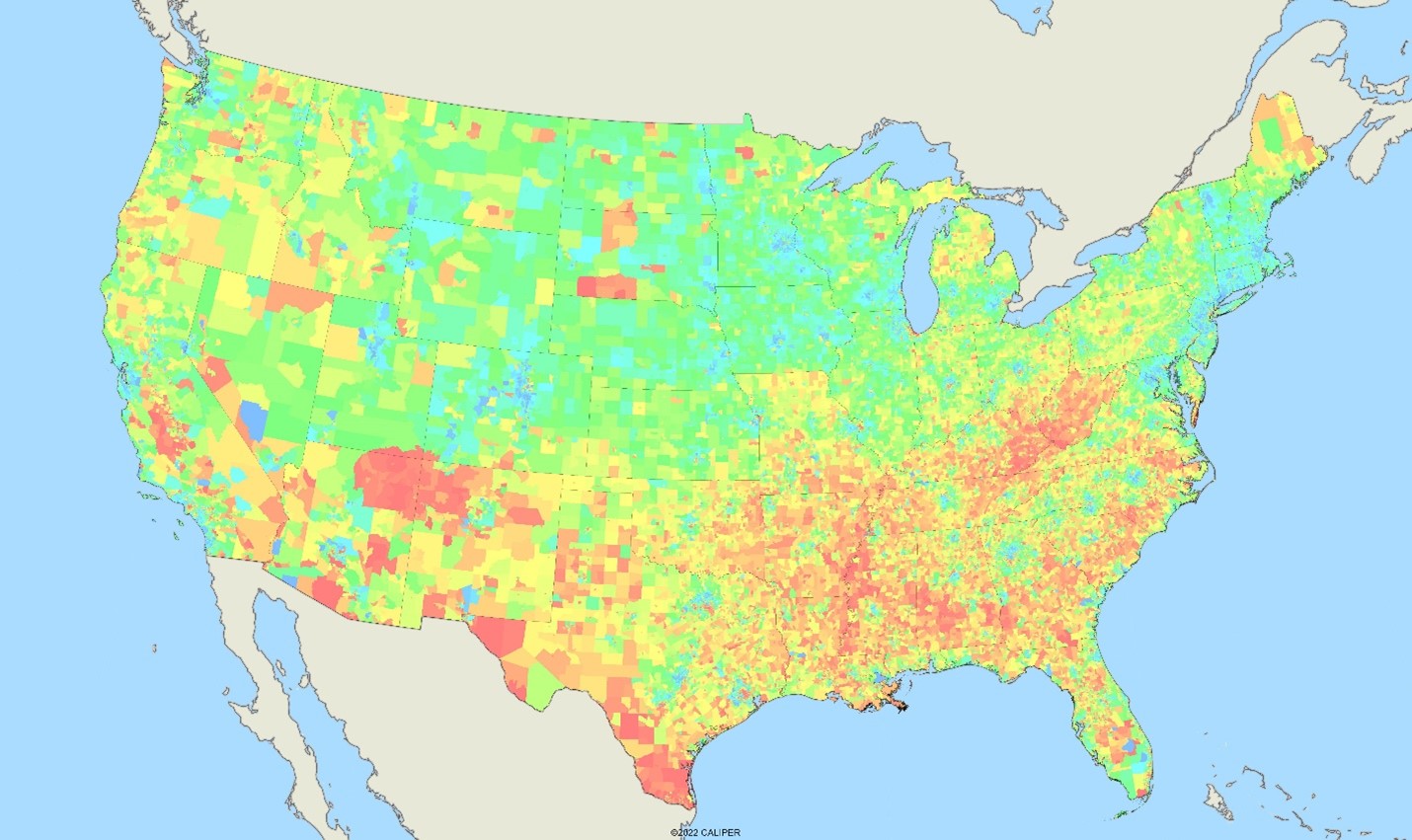Among the better kept secrets in the AGS data library is our Dimensions database, which we first released nearly fifteen years ago. Data science has discovered geography, so we think it is time that we let our secret out of the bag, having been quietly using it for many years as a data development and modeling tool.
Most users are familiar with geodemographic segmentation like Panorama in which neighborhoods are classified according to demographic similarity into a relatively small number of discrete buckets or segments. Think of Dimensions as a continuous version of Panorama that capture the nuances of the demographic differences between neighborhoods – both in terms of residential demographics but also the business landscape. Dimensions has 32 demographic attributes such as ‘Affluence’ and ‘Neighborhood Age’, which are loosely named for interpretation. On the business side, there are 28 attributes such as ‘Tourism’ and ‘General and Light Manufacturing’ and the attributes can be interpreted as land use concentrations.
Dimensions is particularly useful for statistical models as each of the dimensions are statistically independent and are standardized. Model development is quick since attention need not be given to the serious issues of multicollinearity and overfitting. We at AGS use Dimensions for a range of internal development and consulting applications including –
- Neighborhood or trade area profiling using our Site Signature graphing tools that highlight the major demographic or business characteristics that define any location.

- Forecasting models which have a strong demographic or business relationship, such as retail sales, commercial insurance underwriting, or health care demand models.
- Data disaggregation models, which estimate the distribution of a variable within more detailed geographic units. The AGS life expectancy tables at the block group were built from census tract level data by using a Dimensions based regression model that was subsequently scaled to match the original data totals.
- Missing spatial data estimation, where the missing data is highly dependent on demographics. We recently used Dimensions to infill data on chronic disease and risk factors which was missing for two states – see our recent post Estimating Missing Data.

- Site selection and store performance models, either statistical or analog based, using our Site Signature approach which allows for the easy identification of a successful trade area signature which can be combined with the competitor landscape to create effective and low-cost site selection models.
Need more details on Dimensions? Drop us a line and we will happily walk you through the methodology, interpretation, and uses of the data.


Recent Comments